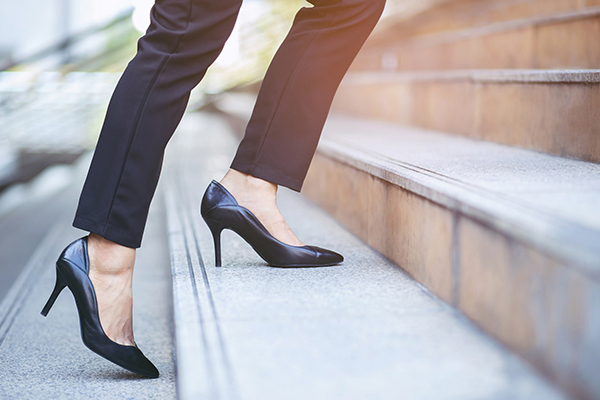
Did you know that an estimated 1 in 3 adults over 65 years old experience bunions?1 Bunions are not only prevalent in older adults though, as adults of all ages can develop bunions. But what exactly is the cause of bunions?
Bunions are bony projections that develop at the base of the big toe due to a misalignment of the toe bones. Bunions cause the foot to widen which may contribute to pain when wearing shoes. The rearrangement of the bones in your foot due to a bunion may also compress some nerves in the foot, resulting in numbness. You can also get pain in the ball of your foot because the misalignment of the big toe shifts pressure to the smaller toes in your foot. There are a variety of causes that contribute to bunions.
Here are some of the most common causes of bunions:
- Genetics
Your genes are the main factor to consider if you are concerned about developing bunions. If you have a family history of bunions, your chances of developing bunions are significantly higher. Women are also at a higher risk of developing bunions. - Tight or uncomfortable shoes
Contrary to popular belief, improper footwear is not the primary cause of bunions, but it doesn’t help. Many individuals who wear tight or narrow shoes may never develop bunions. However, if you have a predisposition to bunions then it may be a good idea to invest in more comfortable, proper footwear. - Arthritis
Arthritis, specifically rheumatoid arthritis, can affect the structure and stability of the joints in your foot. Arthritis weakens the connective tissue and ultimately compromises the integrity of the joints in your foot, contributing to the development of bunions. - Foot/Ankle anatomy
Everyone has a unique anatomy and that includes the structure of your foot and ankle. Individuals with short or tight Achilles tendons or calf muscles may be more prone to developing bunions. This is because these muscles and tendons cannot support as much of a load, thus putting pressure on the forefoot. Individuals with low arches are more likely to develop bunions due to increased pressure put on the forefoot. - Repeated mechanical stress
Certain activities, such as sports or ballet, involve repeated stress on the feet which may contribute to the development of bunions. Thus, repeated foot injuries can affect the alignment of the bones in your foot, causing bunions.
Bunions are ultimately caused by bone misalignment due to excess pressure put on the joints in your toes. If you are concerned about developing bunions or believe you already have bunions, contact Dr. Daniel Dean for his expert advice and amazing treatment options today!
Dr. Daniel Dean is a fellowship-trained foot and ankle orthopaedic surgeon. He treats all musculoskeletal pathologies of the foot and ankle in adolescent and adult patients. He has specialized training in total ankle arthroplasty, sports injuries, flatfoot, complex fractures, and minimally invasive techniques in bunion correction.












